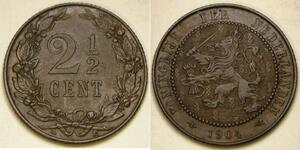1 Nickel / 5 Цент (продана за $14500.0)
1866. Rays. PCGS graded Proof 66 Deep Cameo PQ. CAC Approved. The Act of May 16, 1866 authorized a new five cent coin made of 25% nickel and 75% copper. This created the unusual situation where two coins of the same value circulated simultaneously, the other coin being the silver half dime. A massive quantity of nearly 15 million new "nickels" was produced in the first year, partly to promote the new coin and partly because of the availability of nickel and copper compared to the higher cost of silver for half dimes. The new "nickel" was produced at a time when the Mint was desperately trying to catch up with the huge demand for small coinage after the Civil War. The use of nickel instead of (unavailable) silver, which was being hoarded at the time, was the decision rendered by the powers that be. James Barton Longacre quickly designed the new coin and had patterns struck for various congressmen. Upon striking only a few coins, the dies were found to crack. Longacre determined that the rays were a contributing factor to this rapid die deterioration, and eliminated them after only a small number were struck in 1866-67. The proofs of this type are now well known for their rarity. It is estimated that slightly over 600 proofs were struck for this first year type, few of which remain this nice. This intensely brilliant Gem Proof features deeply mirrored fields and frosted devices with pale champagne-gold iridescence at indirect light angles. The strike is needle-sharp and the eye appeal is fantastic. For future pedigree purposes, a tiny dark spot is at the rim under the T of CENTS. The Act of May 16, 1866 authorized a new five cent coin made of 25% nickel and 75% copper. This created the unusual situation where two coins of the same value circulated simultaneously, the other coin being the silver half dime. A massive quantity of nearly 15 million new "nickels" was produced in the first year, partly to promote the new coin and partly because of the availability of nickel and copper compared to the higher cost of silver for half dimes. The new "nickel" was produced at a time when the Mint was desperately trying to catch up with the huge demand for small coinage after the Civil War. The use of nickel instead of (unavailable) silver, which was being hoarded at the time, was the decision rendered by the powers that be. James Barton Longacre quickly designed the new coin and had patterns struck for various congressmen. Upon striking only a few coins, the dies were found to crack. Longacre determined that the rays were a contributing factor to this rapid die deterioration, and eliminated them after only a small number were struck in 1866-67. The proofs of this type are now well known for their rarity. It is estimated that slightly over 600 proofs were struck for this first year type, few of which remain this nice. This intensely brilliant Gem Proof features deeply mirrored fields and frosted devices with a fully brilliant appearance overall. The strike is needle-sharp and the eye appeal is fantastic. For future pedigree purposes, a tiny dark spot is at the rim under the T of CENTS. Pop 2; 2 finer, 1 in 66+, 1 in 67. (PCGS # 93817) . Estimated Value $12,000 - 13,000. Categories: Nickels
читати далі
Ціна

|
Добавив:
anonymous 2015-02-26 |
|
||
|
||
|
||
Можливо Вас зацiкавлять цi монети
2025-06-18
- Покращення Живого Каталогу Монет / угруповання монет
22 монет було згруповано з 2025-06-11 по 2025-06-18
Одна з них:
2 1/2 Цент Нідерланди
в групі 18 монет / 14 цін
⇑
NETHERLANDS 2-1/2 Cents 1904 - Copper - Wilhelmina - XF/aUNC - 3791 *
2025-05-24
- Нова монета додана до 5 Цент Королівство Нідерланди (1815 - ) Бронза
5 Цент Королівство Нідерланди (1815 - ) Бронза
в групі 7 монет / 7 цін
⇑
Netherlands - 5 Cents 1953 - Juliana, High Quality
Можливо, Вас зацікавить...

-600-300-Tm0KbzbiDNkAAAFLUS9KKMN2.jpg)

-300-150-olbBwcI0BlsAAAEoqYsQYxr4.jpg)
 English
English




-300-150-VITBwcI0OHQAAAEqPTlDRaZv.jpg)






